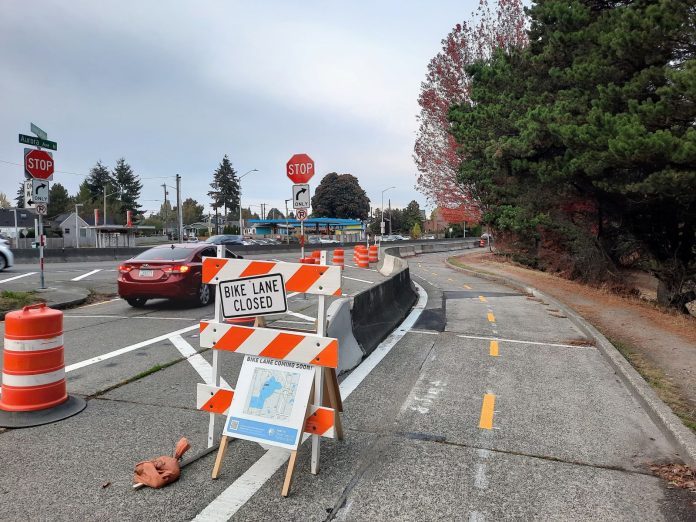
The addition of protected bike lanes around Green Lake has been a huge leap forward for mobility, but the western part of the loop had remained unconnected and incomplete. That gap is about to be closed. The Seattle Department of Transportation (SDOT) has added concrete barriers to Aurora Avenue creating protected bike lanes out of a little used general purpose lane that disappears at the next intersection.
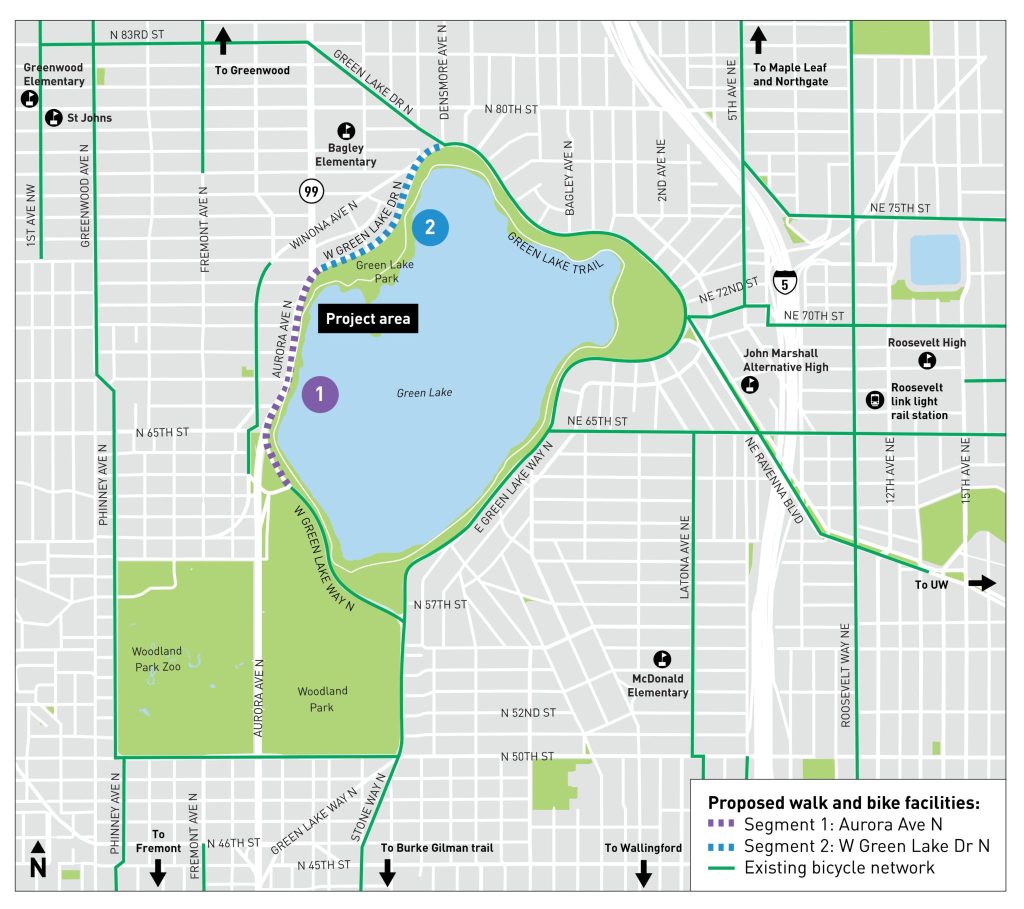
Here’s what riding on the new facility is like via a test run I took on Saturday. Passing highway traffic safely behind concrete barriers will be a new sensation for people biking.
Workers have also striped bike lanes along West Green Lake Drive N, but are still working to add flexposts, which will close the loop and provide protected bike lanes around the whole lake. For now, big orange cones fill in, providing some added protection. Below is a photo tour that shows how the new Aurora lanes will connect to the rest of the Outer Loop.
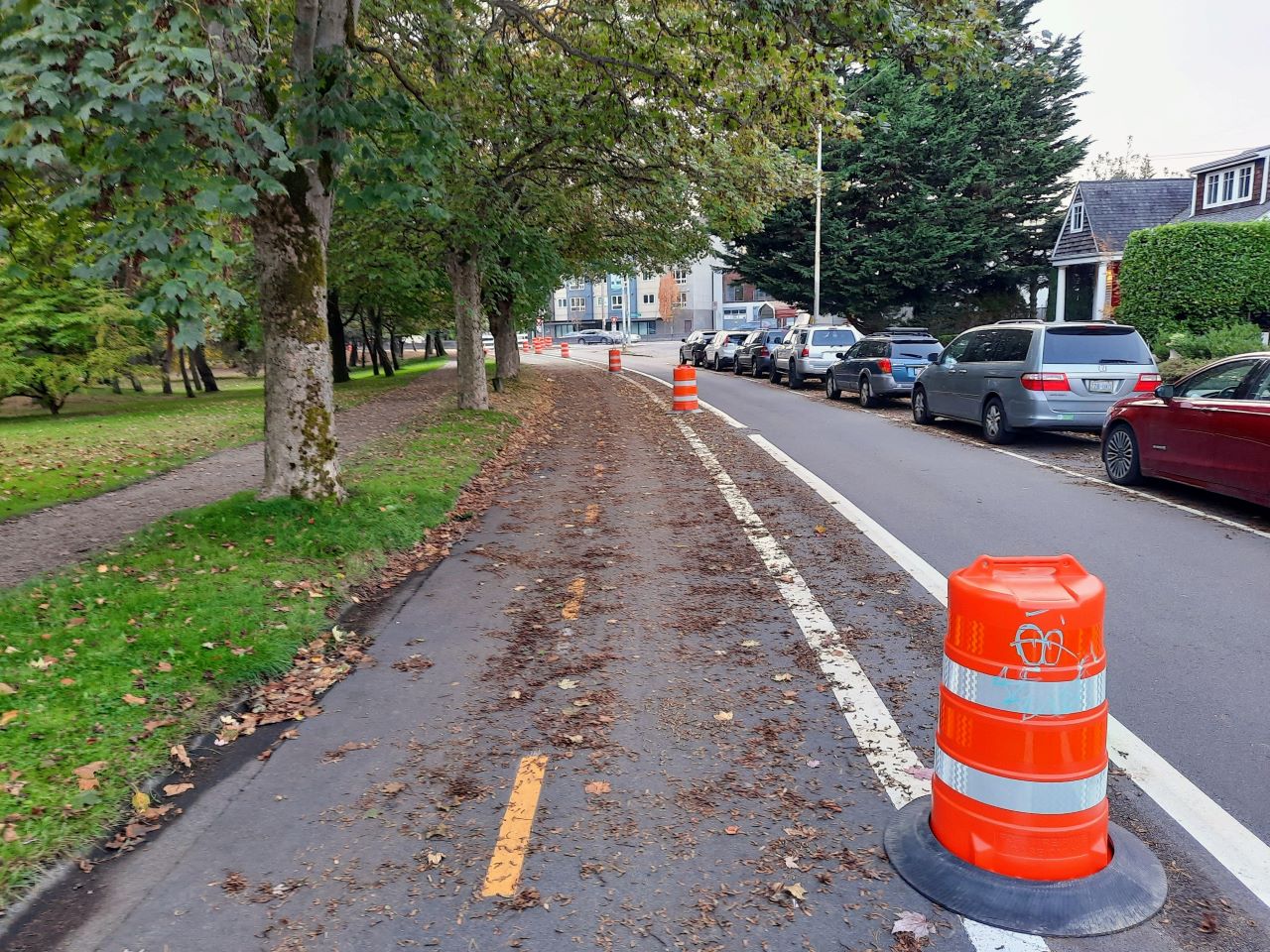
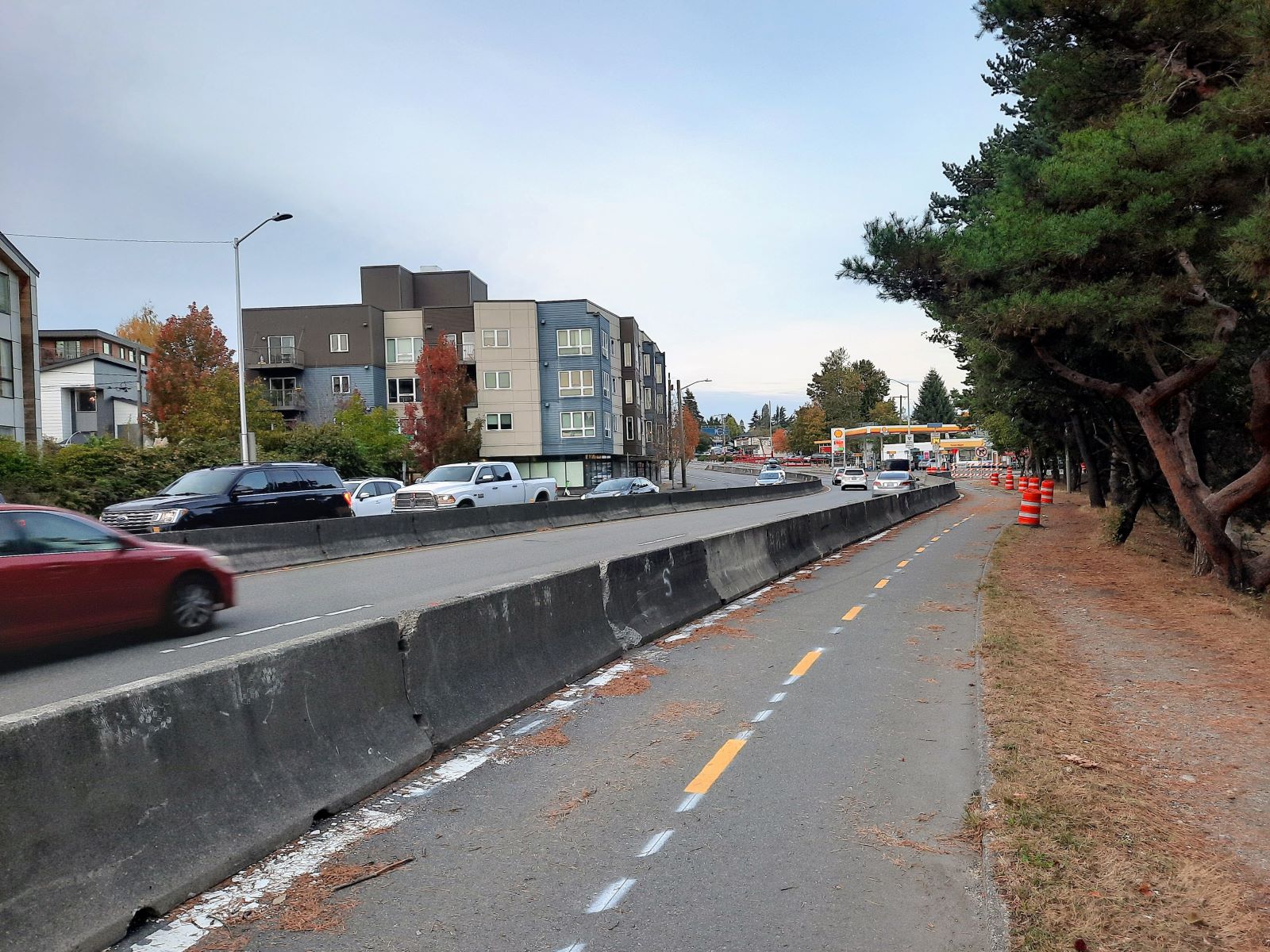
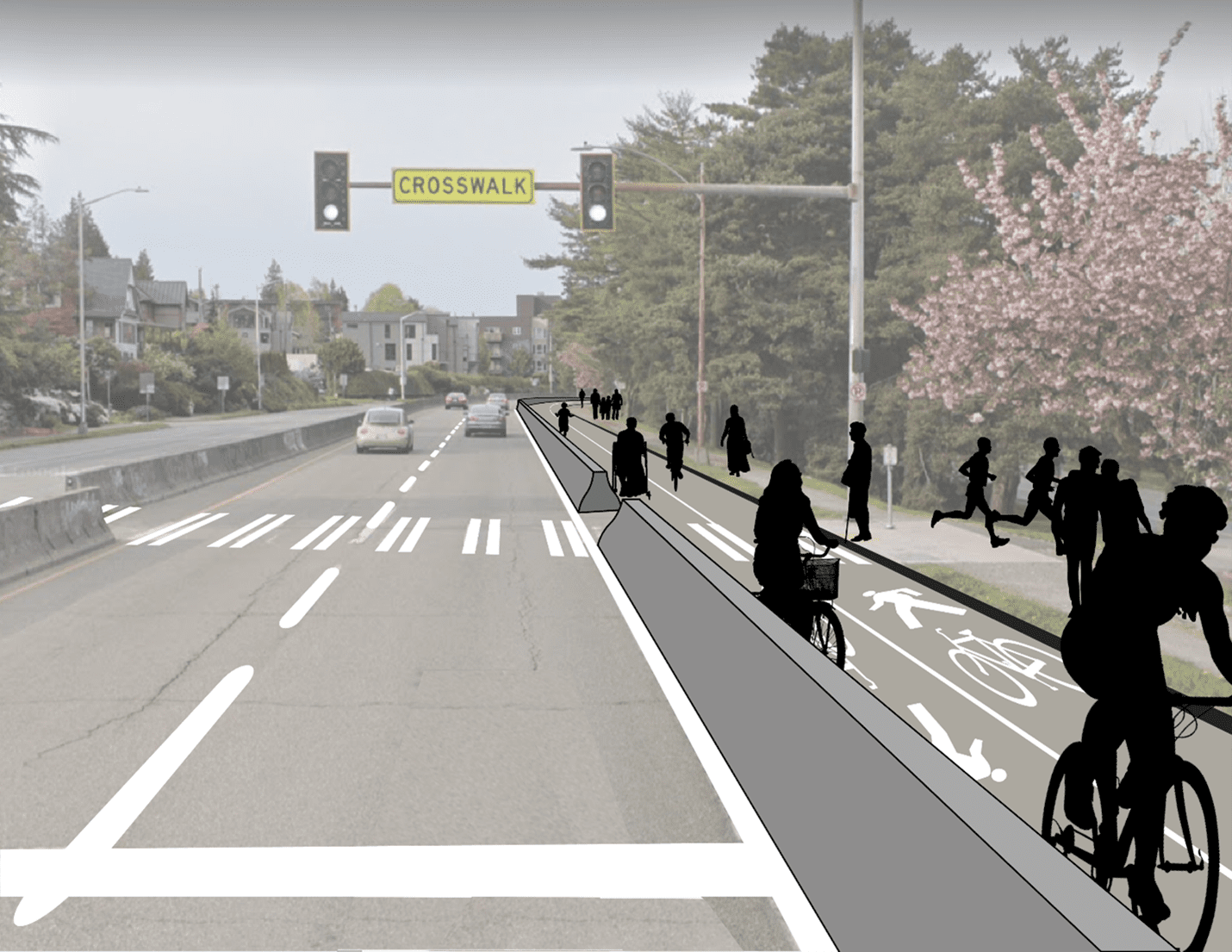
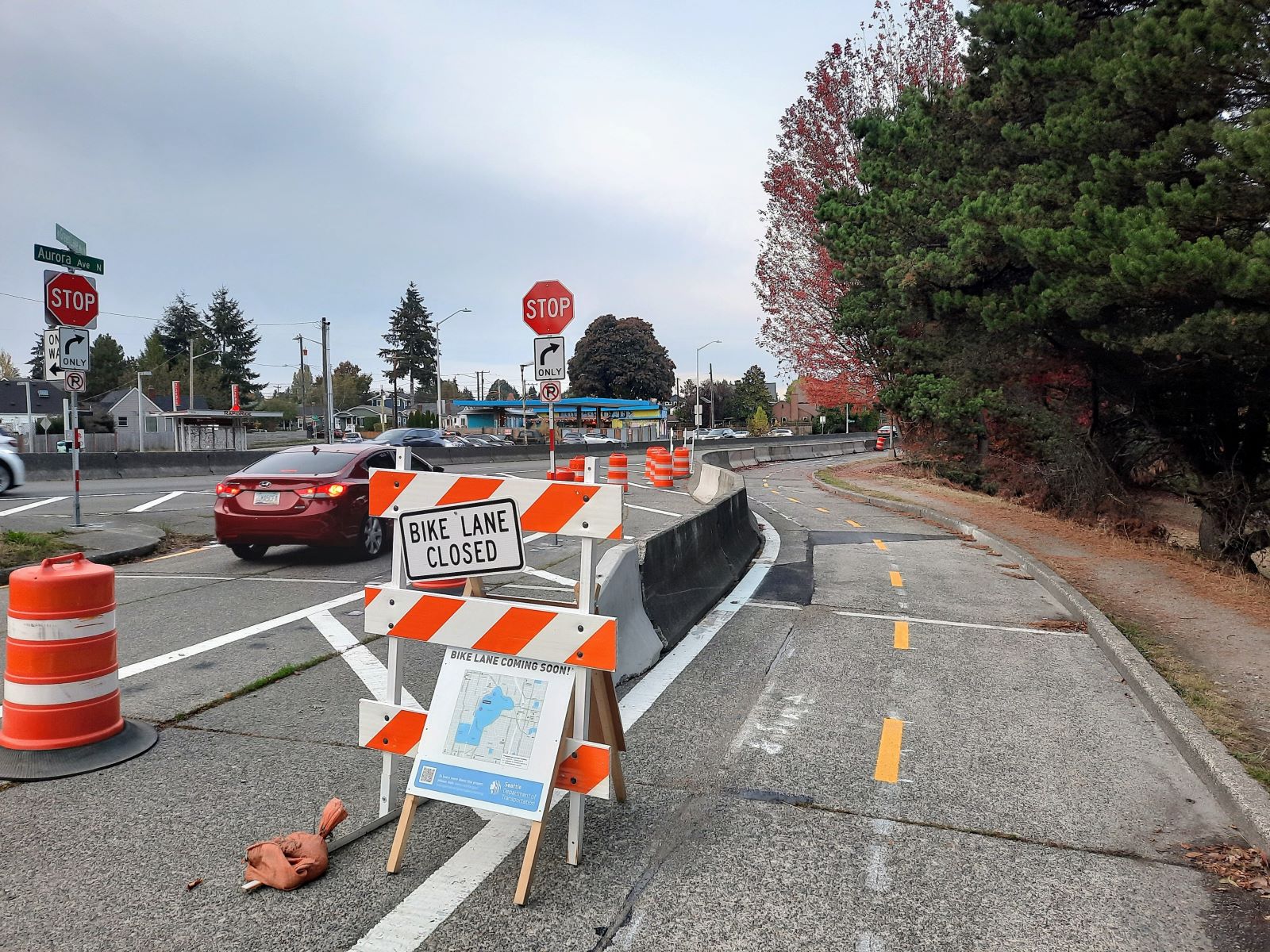
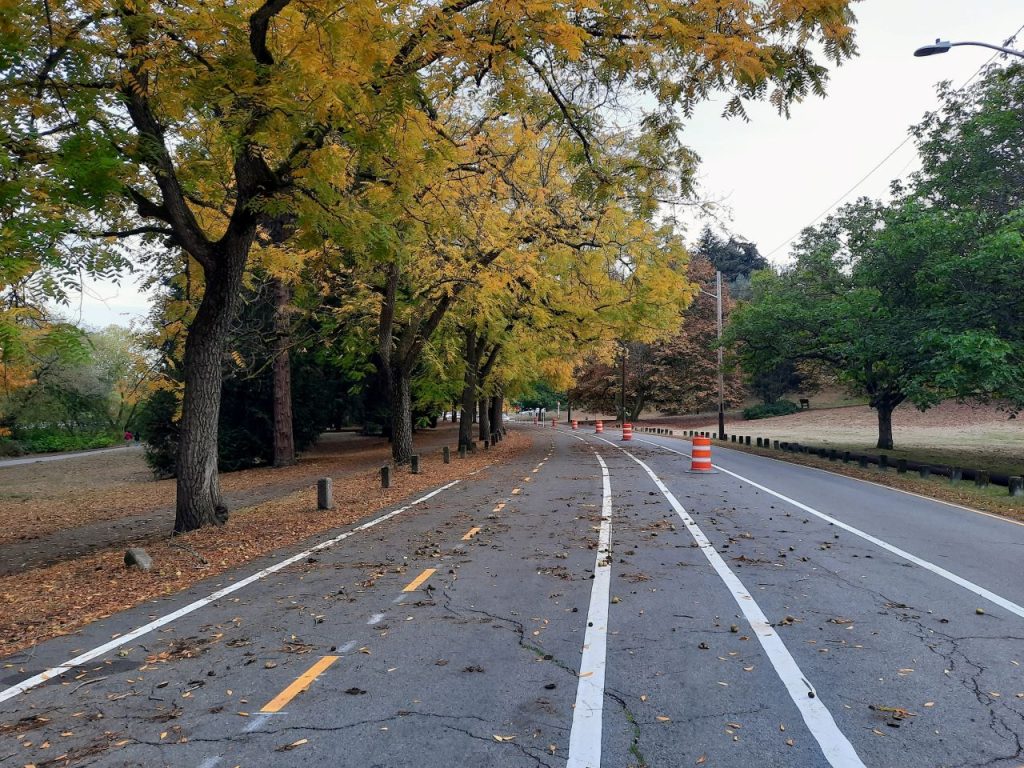
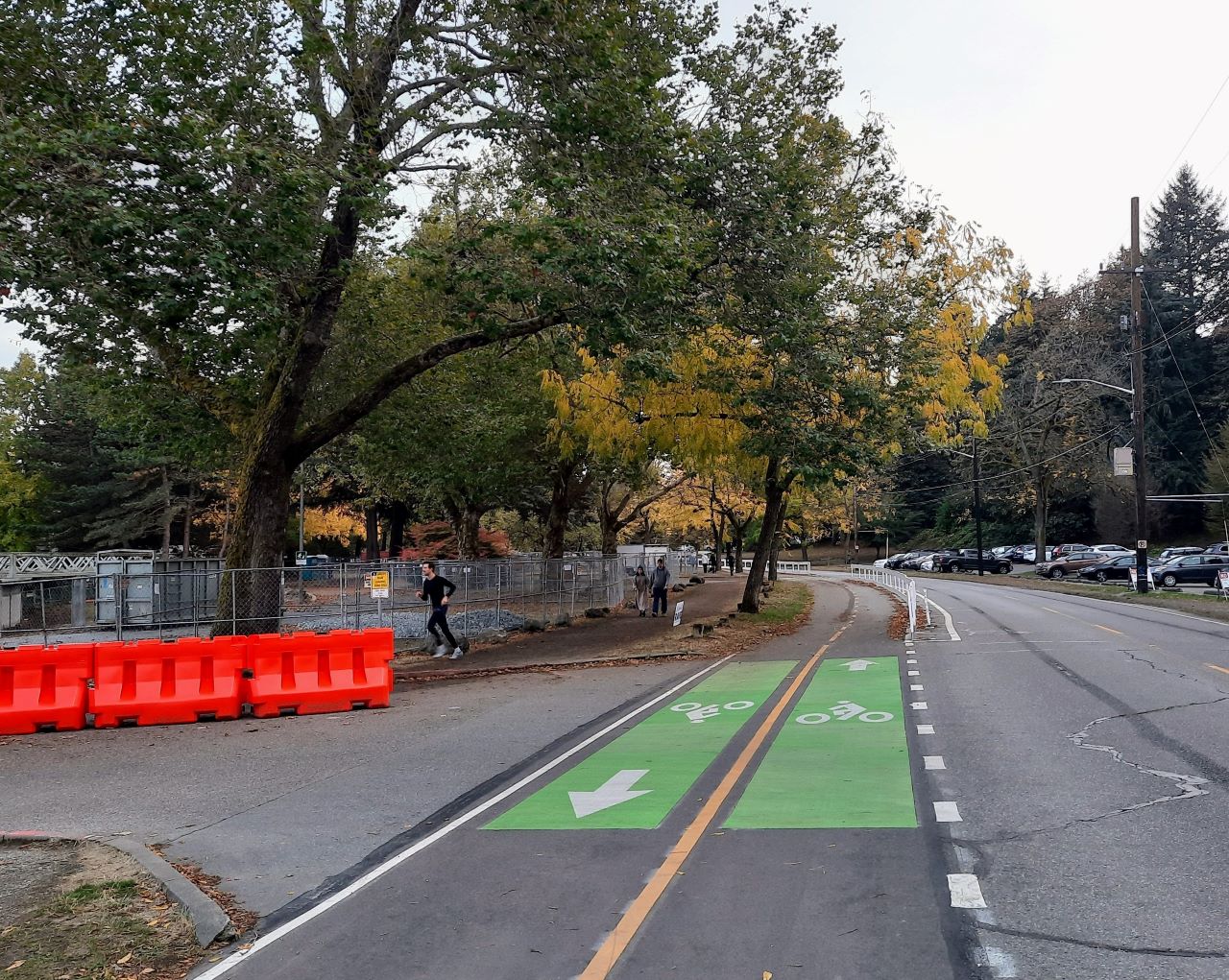
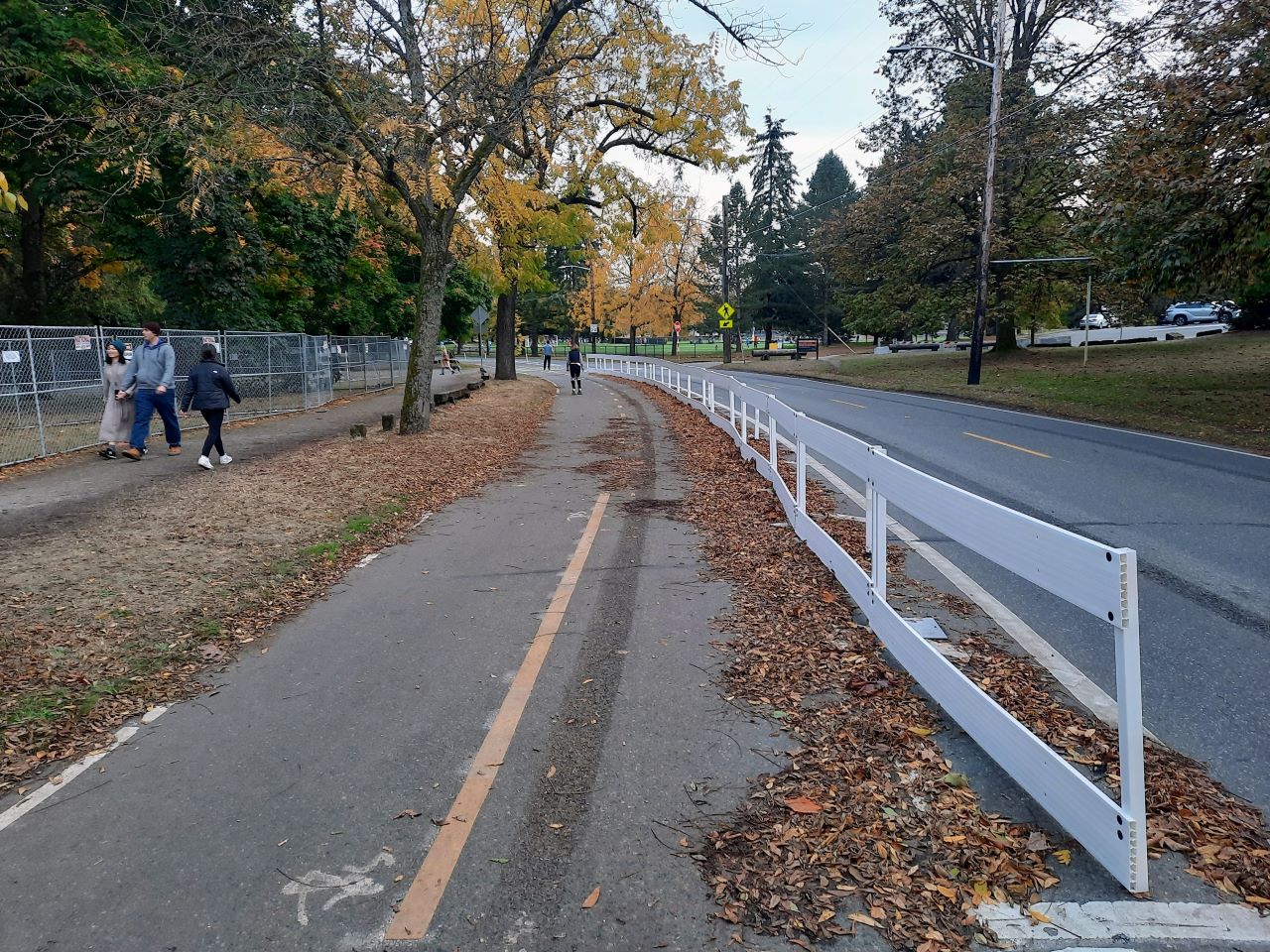
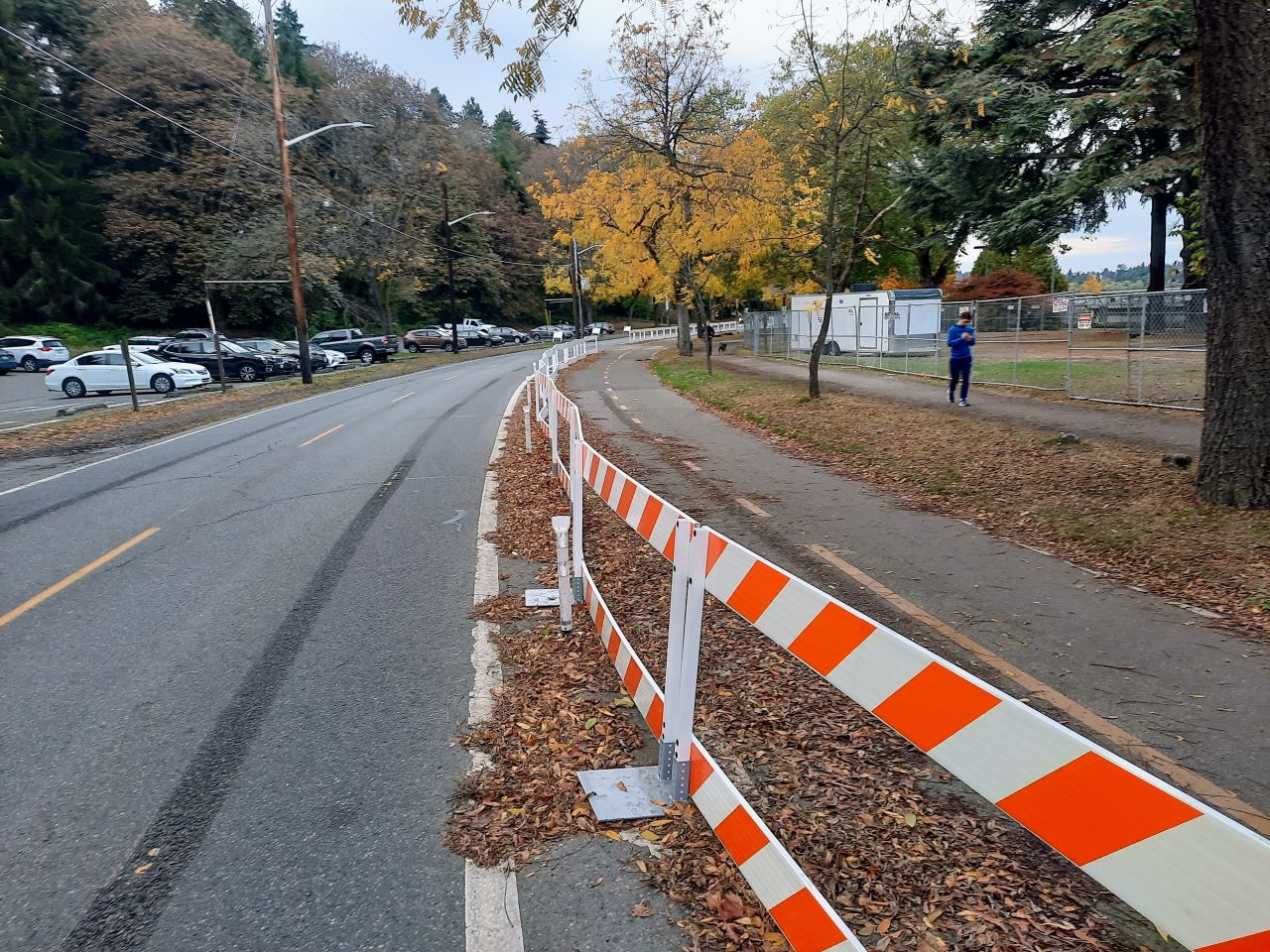
For people trying to make a loop of Green Lake or simply navigate this part of town, the lack of bike facilities on the west side of the lake had been a major issue. Aurora Avenue creates a major barrier to non-motorists, and Seattle Parks had discouraged biking on the pedestrian-focused Inner Loop, with the agency only recently lifting a ban on biking in the inner loop. Biking in the counterclockwise direction is allowed once more, but it can be a fool’s errand when the path is swarmed with people walking and rolling. The Outer Loop solves this issue. It also adds an important connection in the citywide bike network, connecting North Seattle neighborhoods to Roosevelt and the University District via protected bike lanes on Ravenna Boulevard, for example.
For Seattle’s standards, Outer Loop protected bike lanes came together relatively quickly. In early 2021, our transportation reporter Ryan Packer broke the news in Seattle Bike Blog that SDOT was contemplating protected bike lanes on the west side of Green Lake Park. Wrapping up the bike facility by the end of 2022 is fast by recent standards, with some projects taking much longer.
The Urbanist recently broke news that Beacon Hill protected bike lanes funded and in planning since 2019 have been delayed and will now open in 2024. Even worse, Eastlake Avenue protected bike lanes have been in planning since 2015 and may not open until 2026 as the RapidRide J project to which they’re attached has been repeatedly delayed.

With such a dramatic improvement to the bike network in the heart of North Seattle, the contrast with the slow pace of progress in other parts of the city is becoming more pronounced. The bike and safe streets community has repeatedly underscored the need to improve South End connections and facilities. But Seattle process has dragged on. To stem the tide of collision injuries and deaths, the City must be nimbler and roll out safety upgrades much quicker. The success of the Green Lake Outer Loop is something to build upon. Hopefully it will be replicated in South Seattle, which has the dubious distinction of leading the city in crash deaths.
Councilmember Tammy Morales (District 2 – Southeast Seattle) has sounded the alarm on the safety crisis and introduced amendments increasing funding for South Seattle bike lanes. Her colleagues would be wise to support that push.
Doug Trumm is publisher of The Urbanist. An Urbanist writer since 2015, he dreams of pedestrian streets, bus lanes, and a mass-timber building spree to end our housing crisis. He graduated from the Evans School of Public Policy and Governance at the University of Washington in 2019. He lives in Seattle's Fremont neighborhood and loves to explore the city by foot and by bike.

